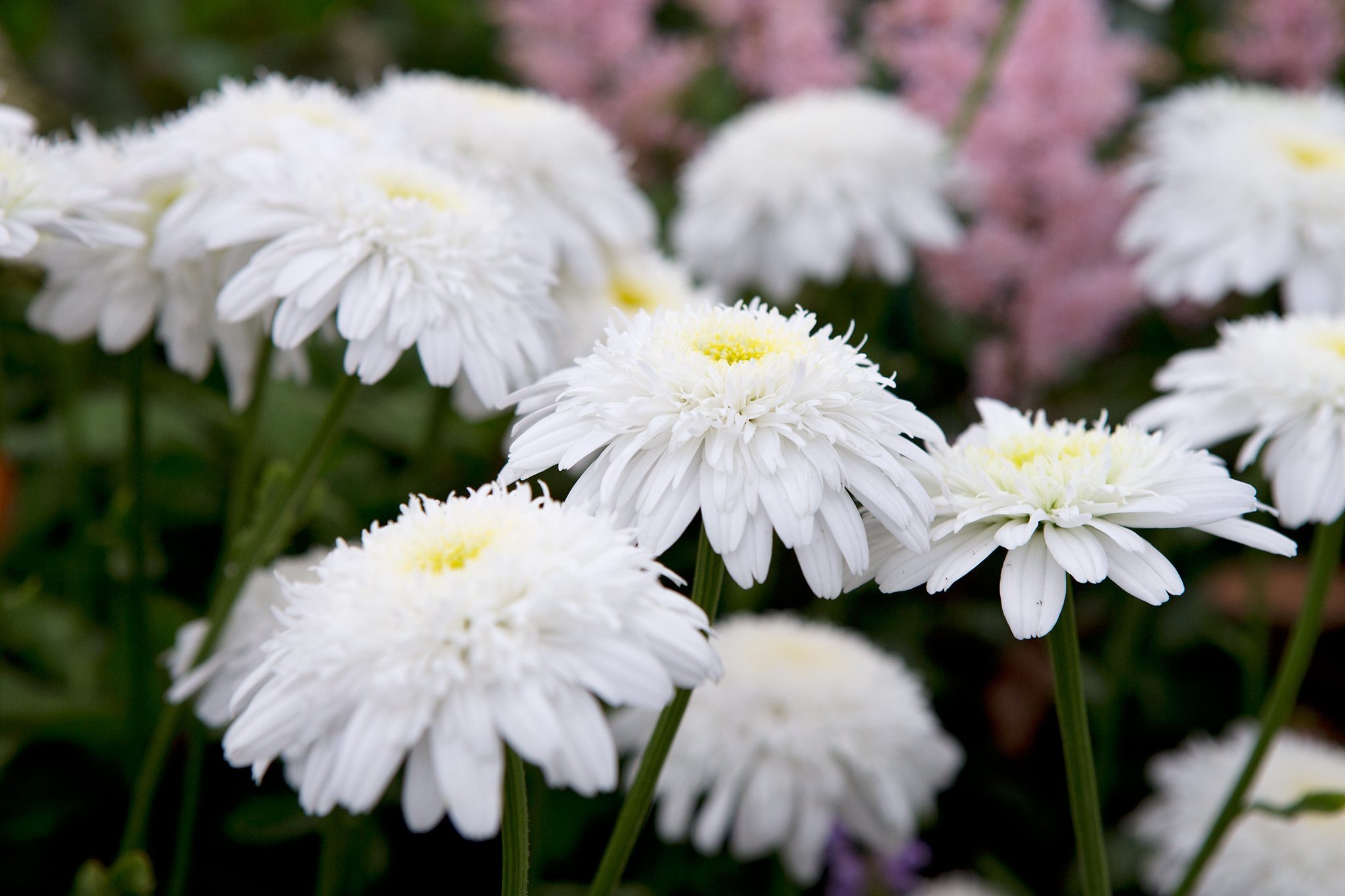
Leucanthemum, commonly known as the oxeye daisy, is a charming flower that brightens up gardens and meadows alike. Ever wondered what makes this plant so special? Leucanthemum isn't just a pretty face; it has a rich history and fascinating characteristics. From its origins in Europe to its spread across North America, this resilient flower has captured the hearts of many. Did you know that it’s often used in traditional medicine? Or that it’s a symbol of purity and innocence? Whether you're a gardening enthusiast or just curious, these 26 facts about Leucanthemum will surprise and delight you. Ready to learn more? Let's dive in!
What is Leucanthemum?
Leucanthemum, commonly known as daisies, are beloved flowers found in gardens worldwide. These cheerful blooms are more than just pretty faces; they have fascinating characteristics and a rich history. Let's dive into some intriguing facts about these delightful flowers.
Botanical Background
Understanding the botanical aspects of Leucanthemum can give us a deeper appreciation for these flowers.
- Leucanthemum is a genus: This genus belongs to the Asteraceae family, which includes sunflowers and asters.
- Name origin: The name "Leucanthemum" comes from Greek words "leukos" (white) and "anthemon" (flower), reflecting their typical white petals.
- Species count: There are about 70 species within the Leucanthemum genus.
- Perennial plants: Most Leucanthemum species are perennials, meaning they live for more than two years.
- Native regions: These flowers are native to Europe and temperate regions of Asia.
Physical Characteristics
Leucanthemum flowers have distinct physical traits that make them easily recognizable.
- Petal arrangement: They typically have white petals surrounding a yellow central disc.
- Height: Depending on the species, they can grow from 10 inches to 3 feet tall.
- Leaf shape: Leaves are usually dark green, lobed, and can be either toothed or smooth-edged.
- Flower size: The flower heads can range from 1 to 4 inches in diameter.
- Stem structure: Stems are usually erect and can be either smooth or slightly hairy.
Growth and Care
Growing Leucanthemum can be a rewarding experience for gardeners.
- Sunlight needs: They thrive in full sun but can tolerate partial shade.
- Soil preference: Well-drained soil is ideal for these flowers.
- Watering: Regular watering is necessary, especially during dry spells.
- Fertilization: A balanced fertilizer can promote healthy growth and abundant blooms.
- Pruning: Deadheading spent flowers encourages more blooms and prevents self-seeding.
Ecological Importance
Leucanthemum flowers play a significant role in their ecosystems.
- Pollinator attraction: They attract bees, butterflies, and other pollinators.
- Wildlife support: Some species provide food for caterpillars and other insects.
- Erosion control: Their root systems help stabilize soil and prevent erosion.
- Companion planting: They can be planted alongside vegetables to attract beneficial insects.
Cultural Significance
Leucanthemum flowers have found their way into various cultural contexts.
- Symbolism: Daisies often symbolize purity, innocence, and new beginnings.
- Folklore: In some cultures, daisies are associated with love and fertility.
- Medicinal uses: Historically, parts of the plant were used in traditional medicine to treat various ailments.
- Art and literature: Daisies frequently appear in art, poetry, and literature as symbols of beauty and simplicity.
Interesting Tidbits
Here are some fun and lesser-known facts about Leucanthemum.
- Edible petals: The petals are edible and can be used in salads or as garnishes.
- Longevity: Cut daisies can last up to two weeks in a vase with proper care.
- Hybrid varieties: Many hybrid varieties have been developed for enhanced color, size, and disease resistance.
The Final Petal
Leucanthemum, commonly known as daisies, are more than just pretty flowers. They have a rich history, unique characteristics, and surprising benefits. From their origins in Europe and Asia to their symbolic meanings in various cultures, daisies have woven themselves into the fabric of human life. They’re not only beautiful but also useful in traditional medicine and as a natural insect repellent.
These flowers are easy to grow, making them a favorite among gardeners. They thrive in various climates and require minimal care. Plus, they attract pollinators like bees and butterflies, contributing to a healthier ecosystem.
Whether you’re a gardening enthusiast or just someone who appreciates nature’s beauty, daisies offer something special. Their simplicity and resilience remind us of the beauty in everyday life. So next time you see a daisy, take a moment to appreciate all that this humble flower represents.
Was this page helpful?
Our commitment to delivering trustworthy and engaging content is at the heart of what we do. Each fact on our site is contributed by real users like you, bringing a wealth of diverse insights and information. To ensure the highest standards of accuracy and reliability, our dedicated editors meticulously review each submission. This process guarantees that the facts we share are not only fascinating but also credible. Trust in our commitment to quality and authenticity as you explore and learn with us.
